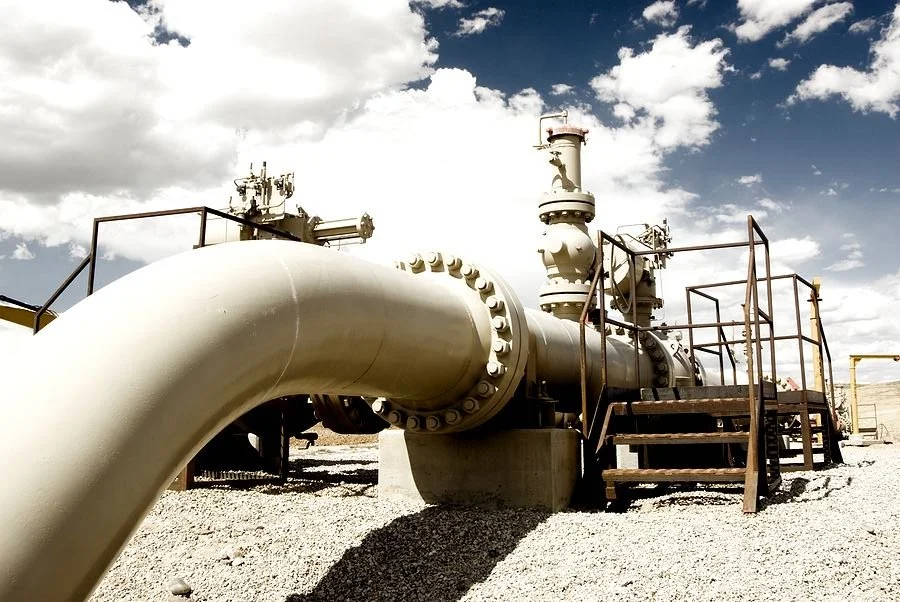Natural Gas
Independent testing corroborates the existence of large reserves of natural gas at our Holbrook and Golden Eagle prospects.
Golden Eagle
Geological opinion is that the upper Pennsylvanian Beds in the Ismay Formation at our Golden Eagle fields are highly Stressed and Fractured. In addition to Helium it is expected these features will translate into a prolific source of natural gas.
Holbrook Basin
Previous test wells drilled near the apex of the Holbrook anticline produced 2 mmcf of natural gas per day. Natural gas is likely trapped along the Devonian source rocks. We expect the reefs, beaches and sandbars at the edge of the Upper Supai Salt Basin to provide an abundant source of natural gas.
Natural gas prices are at levels not seen since 2008. From 2021 prices rose more than 500% through June 2022.
Natural Gas
Viability
Demand Factors
Higher average temperatures forces Americans to crank up the air conditioning.
Supply has failed to keep up with strong demand for gas and there are relatively low inventory levels in the United States.
Gas producers are under pressure from Wall Street to spend less on drilling projects and more on dividends and buybacks to shareholders.
Europeans are reliant on energy from Russia who has slashed natural gas flows in response to Western sanctions. Prices in Europe are considerably higher than in the United States.
Better export profits means the United States has stepped up its exports of LNG to Europe in an effort to mitigate the impact of reduced Russian gas flows.
Applications
Electricity
The generation of electricity is a major use of natural gas and produces energy much cleaner than coal fired plants. Electricity generation can be via direct gas powered turbines, indirectly with steam turbines or a combination of both.
Production
US Natural Gas Imports/Exports
Source: US EIA
EIA Forecast (Bcfd)
2023. 2022. 2021
Production 94 96 100
Consumption 83 86 85
Exports 9.8 10.8. 12.7
Source: US EIA
What
Natural gas is a fossil fuel formed from plants, animals, and microorganisms that lived millions of years ago. It is formed underground, under intense heat and pressure which causes the carbon bonds in the organic matter to break down into methane.
Discovery
Geologists identify likely formations via seismic surveys. If the site displays potential an exploratory well is drilled. Results from the test well determines if the formation is commercially viable and if so one or more production wells are drilled horizontally or vertically. In conventional deposits, the natural gas generally flows easily up through wells to the surface and is captured on site.
Processing
Wet natural gas that comes directly from the well is sent to processing plants and processed to separate natural gas liquids (NGLs) and other impurities. Dry, consumer-grade, or pipeline quality natural gas is then usually sent through pipelines to underground storage fields or to distribution facilities for final consumption.
Storage
Natural gas is stored in large volumes in underground facilities and in smaller volumes in tanks above or below ground. Most underground storage is in depleted natural gas or oil fields close to consumption areas. Alternatives are Salt cavern storage facilities and Water aquifers.
Where
Conventional natural gas is found within large cracks and spaces between layers of overlying rock. Shale gas is found where natural gas occurs in the tiny pores within some formations of shale, sandstone, and other types of sedimentary rock. Associated natural gas occurs with deposits of crude oil.
Extraction
Natural gas is most commonly extracted by drilling vertically from the Earth’s surface. In such cases the well is limited to the gas reserves it encounters. Horizontal wells may improve production and generally have less environmental impact. Hydraulic fracturing uses processes to further expand the amount of gas that a well can access. However this practice can have negative environmental consequences.
Transportation
After natural gas is extracted, it is most frequently transported through pipelines (from 2 to 60 inches in diameter) from production fields to markets. When natural gas arrives at locations where it will be used, it flows into smaller diameter mains pipes and then into smaller service lines that go directly to homes or buildings.
LNG
Methane gas is processed into LNG by cooling it to −161°C, at which point it becomes a liquid. This reduces the volume of the natural gas by a factor of more than 600. The reduced volume facilitates economical transport by sea or road to places that do not have pipelines.
Industrial
Natural gas is mostly used for thermal applications in industrial settings as well as waste treatment, food processing and for refining metals and petroleum.
Commercial
Natural gas is used in commercial settings such as restaurants and shopping malls to power water heaters, dryers, and stoves.
Residential
In residential homes the most popular use of natural gas is heating and cooking and to power home appliances such as air conditioners, outdoor lights and clothes dryers.
Transportation
Natural gas can also be used as an alternative fuel for cars, buses and trucks. There are more than 5 million natural gas vehicles (NGV) worldwide.
The United States is the world's largest producer of Natural Gas and since 2017 has been a net exporter.
The United States has the world's largest reserves, estimated at 1320.5 trillion cubic feet, 20% of global reserves.
The largest reserves in the USA are located in Texas, Oklahoma, and Louisiana, and even without new discoveries are estimated to last at least another 60 years.
The United States used 30.28 trillion cubic feet (Tcf) of natural gas in 2021
The equivalent of 31.35 quadrillion British thermal units (quads)
Which amounted to 32% of U.S. total energy consumption.
Source: US EIA
Source: US Stats Division






